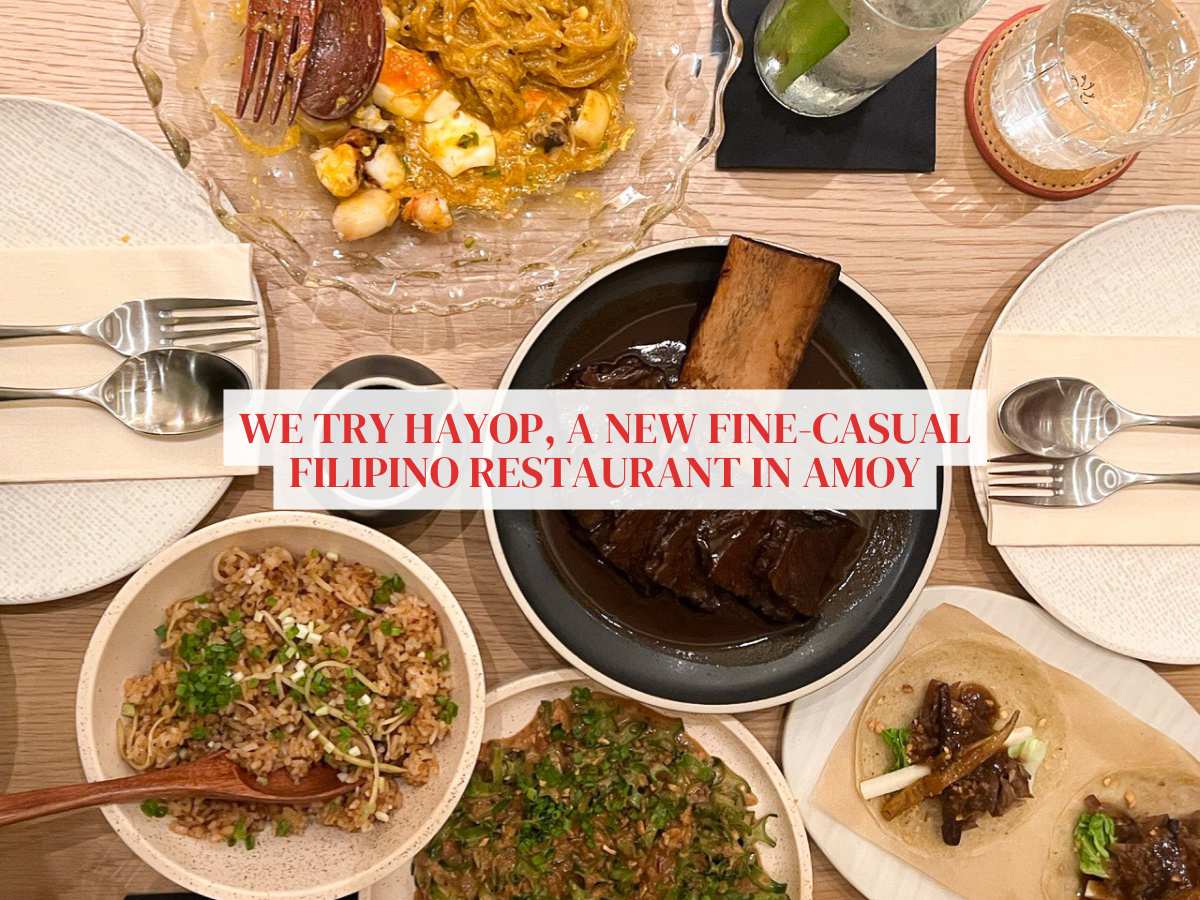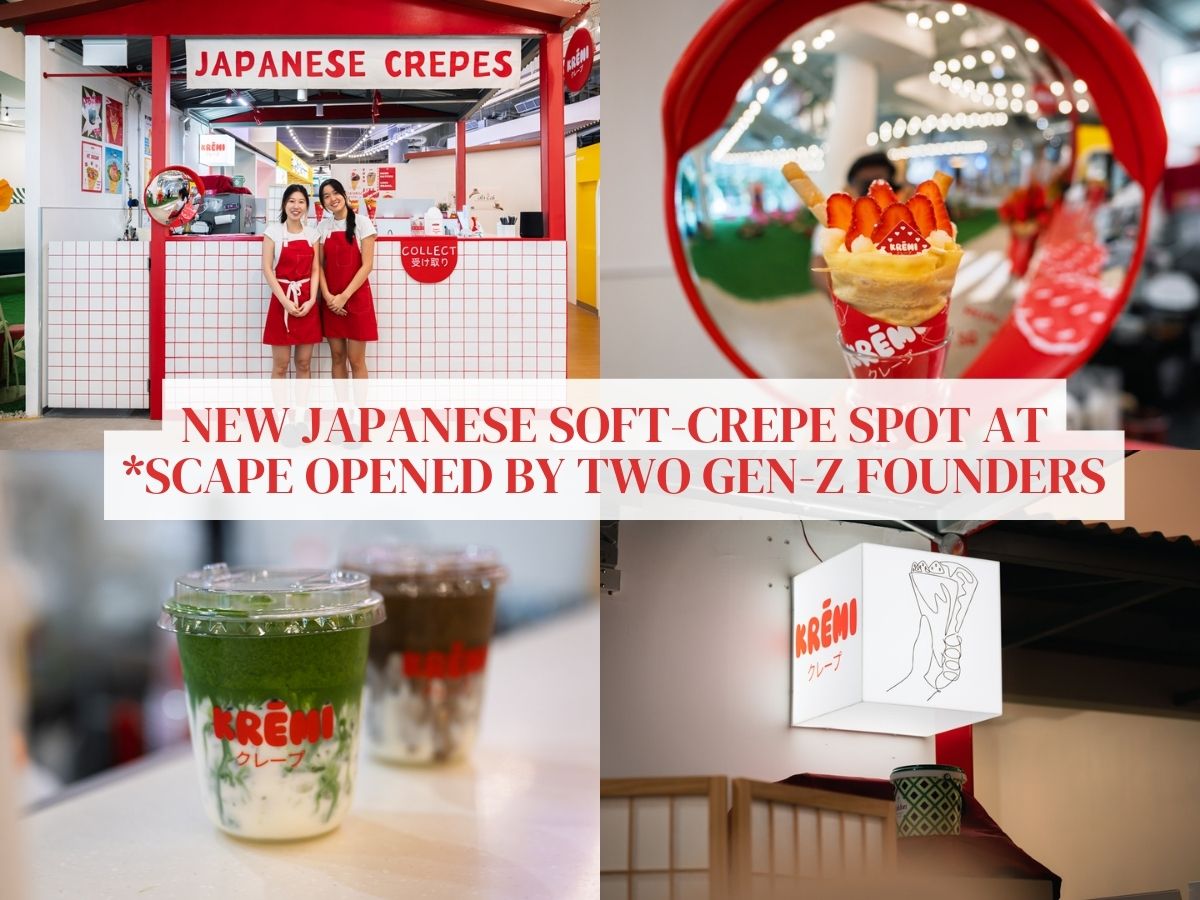Review: Hayop, a beast of Filipino flavours executed with flair
- Hayop is the sister restaurant of Manam in Manila.
- The decision to open Hayop in Singapore was driven by the nation’s hotpot of cuisines and the demand for Manam to open an outpost here.
- The Midnight adobo is a standout dish that uses grass-fed New Zealand wagyu bone-in short rib instead of the usual pork or chicken.
Before meeting my fiance, Filipino food wasn’t on my radar. With Singapore renowned as one of Asia’s culinary capitals, the sheer variety of cuisines can be overwhelming.
Yet, I now find myself occasionally whipping up a hearty serving of homemade chicken adobo to satisfy sudden cravings. It’s one of my favourite Filipino dishes (among the ones my future mother-in-law cooks).
Adobo aficionados often divide into two camps: Team soy sauce or team vinegar. Like the masterminds behind Hayop, I’m firmly in the latter camp, relishing a bowl rich with tangy notes.
I was especially looking forward to trying its take on lumpia (S$14) and halo-halo (S$18), two popular Filipino dishes that I trust will not disappoint.
The backstory

Hayop, a Tagalog slang term meaning “beast”, is the sister restaurant of Manila’s beloved Manam. With over 30 outlets in the Philippines, Manam is operated by the acclaimed F&B firm The Moment Group — the group is also behind powerhouse Din Tai Fung’s presence in the Philippines.
This Singapore venture is a collaboration between The Moment Group, Russell Yu of Iki Concepts and Gwen Lim of Patisserie G.
Following Manam’s wildly successful 2019 Singapore pop-up, the team was constantly encouraged to establish a permanent presence here.
Besides just serving nostalgic dishes to Filipinos living in Singapore, Hayop aims to champion Filipino cuisine beyond its borders. The restaurant’s name echoes the diverse flavours and cultures of the Philippines, offering diners a multi-sensory journey through the archipelago’s culinary landscape.
The interior is spacious, set in a warm glow, with modern nods to the Philippines’ cultural elements. Custom-built elements by famed designer Rita Nazareno, curated wallpaper displaying archival images from 19th-century Philippines and hanging fabric lamps that mirror intricate woven fishing nets highlight the lupa (land) and dagat (sea) dishes on the menu.
Our verdict

Arrive with a hearty appetite; the flavours here are bold and unapologetic.
Hayop’s fare is best enjoyed family-style, so bring a crowd to fully appreciate the menu’s breadth and depth.
The must-order dish is undoubtedly the Midnight adobo (S$52), a wickedly indulgent take on the classic dish featuring succulent grass-fed New Zealand wagyu bone-in short rib.
The cocktail menu is equally impressive, spanning mild and sweet, to strong and bitter, so there’s something for every palate.
I appreciate a menu that has more than two dessert options (it’s actually annoying for a dessert-lover like me), so I was thoroughly pleased to discover that Hayop has four sorbetes (traditional Filipino ice cream) flavours and four other sweet choices.
What it’s good for
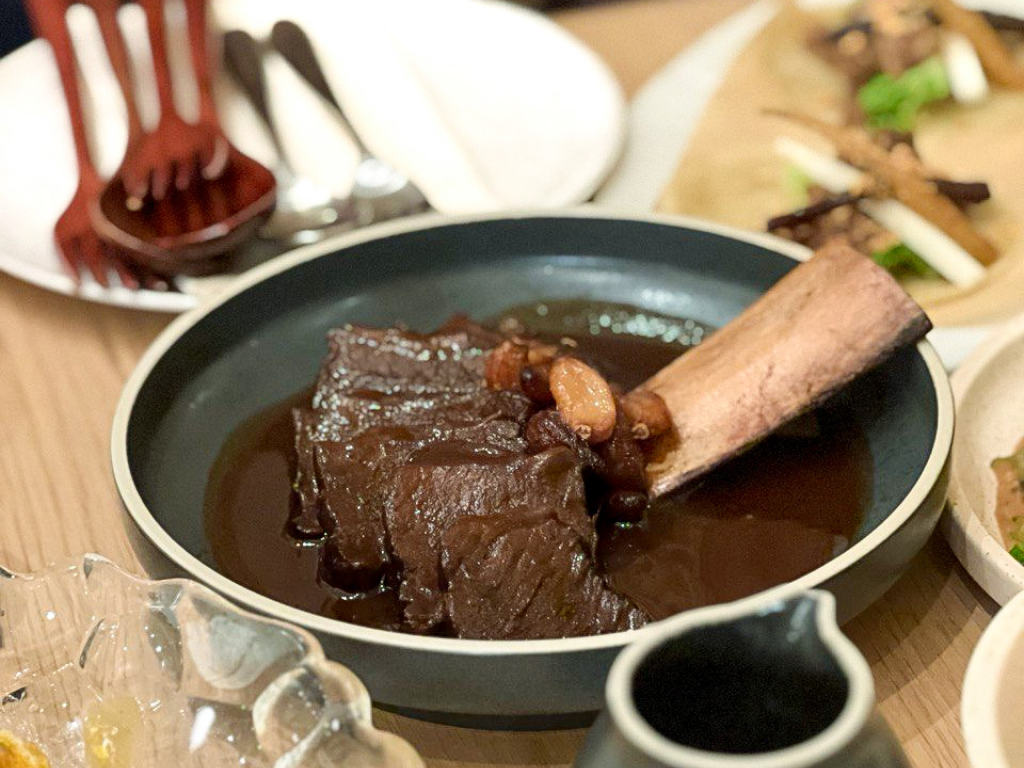
Hayop’s Midnight adobo is a hunky portion of grass-fed New Zealand wagyu bone-in short rib braised in coconut vinegar, soy sauce and red wine. Melt-in-your-mouth confit garlic cloves elevated the fork-tender beef.
It also happens to be a family recipe from The Moment Group’s co-founder and creative director, Abba Napa.
Pro tip: Order extra rice to soak up every last drop of the precious gravy. Hayop has three kinds — sinangag (rice stir-fried in confit garlic oil, S$6), bagoong (rice sauteed in fermented shrimp paste, S$10) and fragrant jasmine rice (S$2, or get the eat-all-you-can option at S$5).
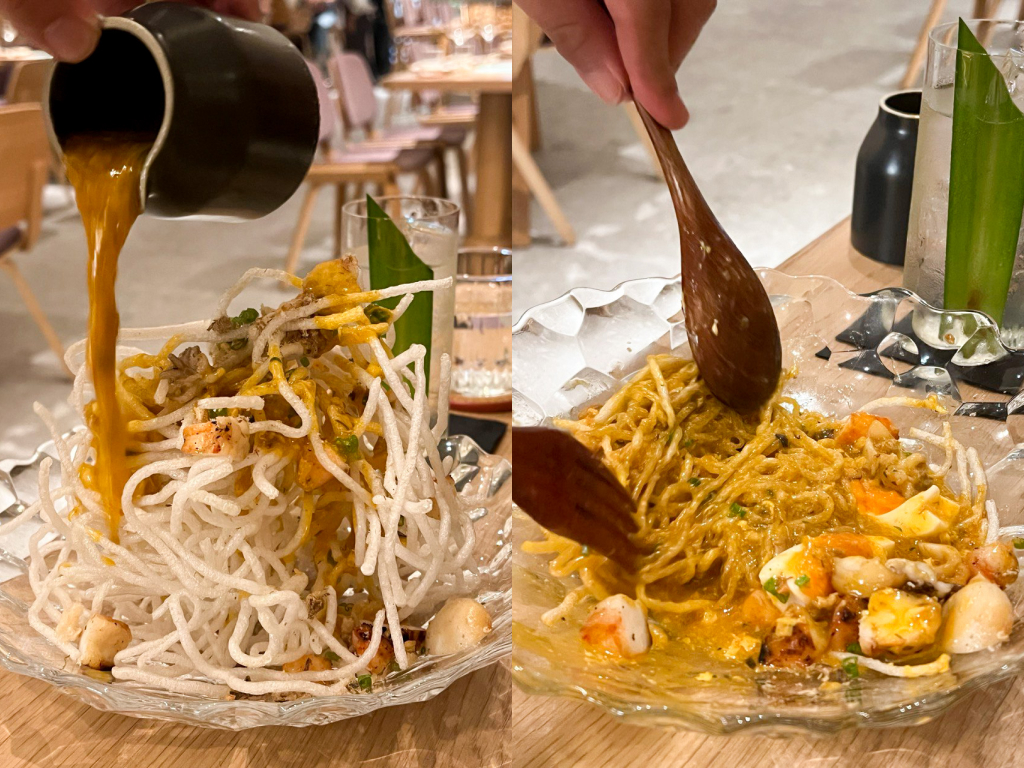
The dish arrived as a nest-like structure of white fibres, but Manam’s crispy palabok (S$26) quickly transformed into jelly-like noodles with a drizzle of shrimp head and annatto sarsa (a sauce made with smoked fish, tofu, ground pork and shrimp head stock).
The deep-fried glass noodles collapsed dramatically, melding with the other ingredients to create a saucy appetiser reminiscent of laksa broth — an unexpected but comforting comparison, sans the spice.
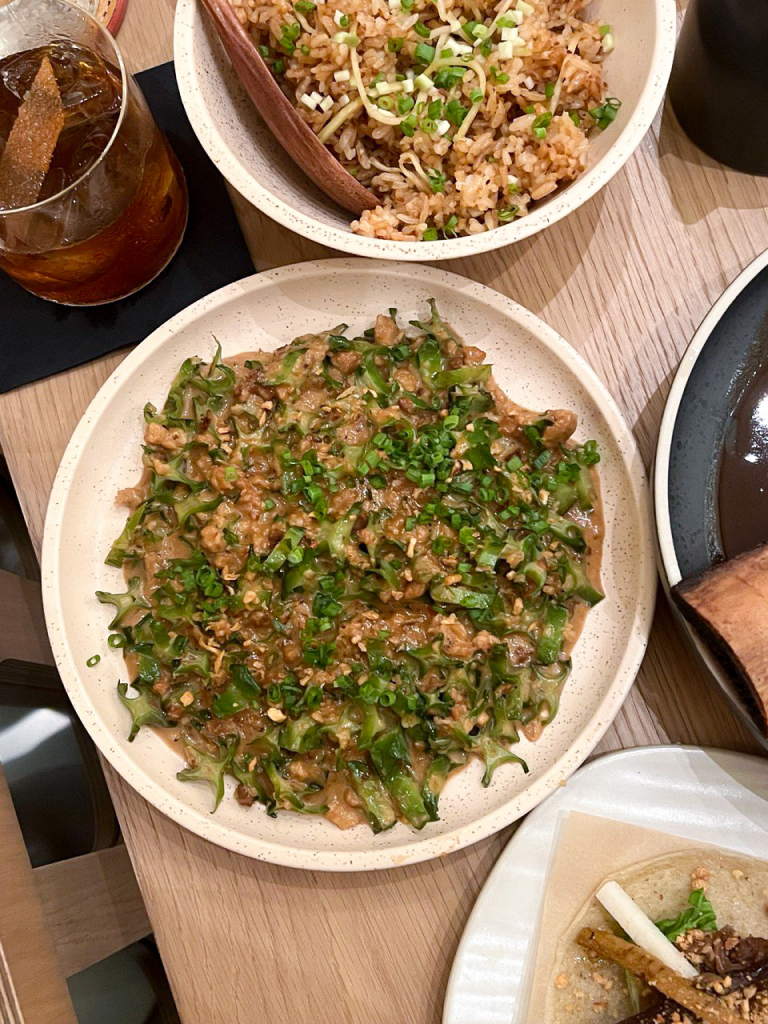
Don’t let appearances fool you with the gising gising (S$16). This vegetable dish, literally meaning “wake up, wake up”, packs a flavourful punch. Swapping traditional minced pork for tofu crumble, this dish is a creamy, nutty delight that had me scraping the plate clean.
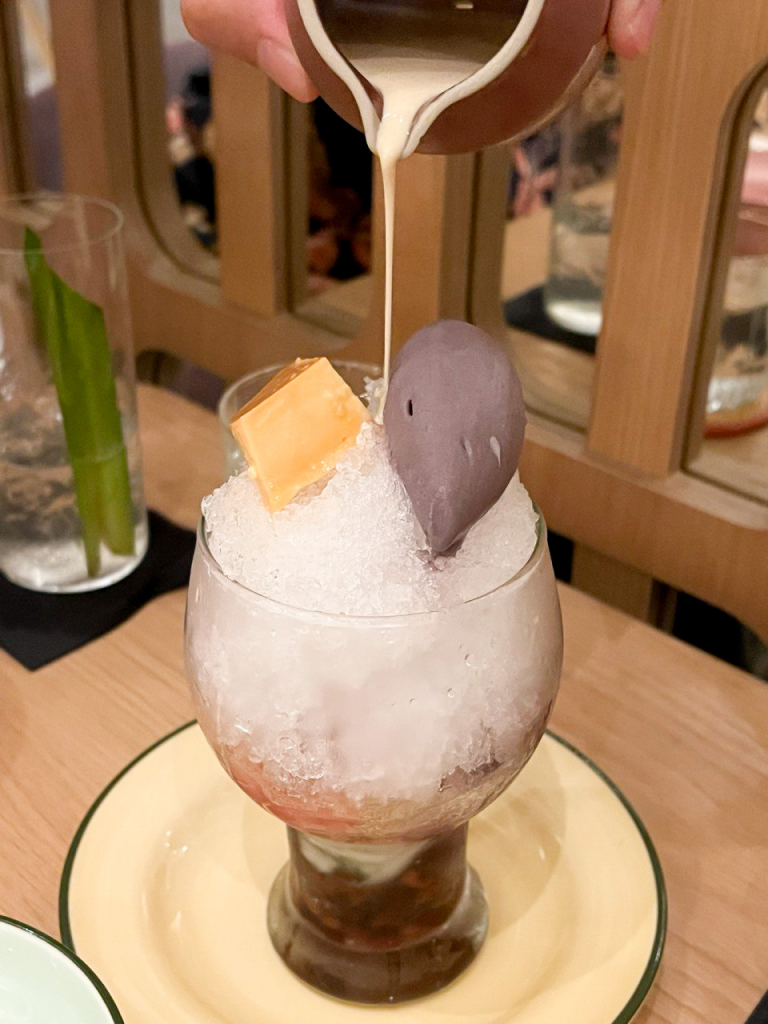
For dessert, Hayop’s halo-halo might just dethrone Singapore’s beloved ice kacang. This glass of sheer indulgence layers shaved ice, ube halaya (jam), nata de coco, red beans, palm seeds, macapuno (coconut), housemade ube sorbetes, and leche flan. A generous pour of evaporated milk ties it all together, creating a perfect symphony of textures and flavours.
Just take your time in savouring this, to combat the dreaded brain freeze.
What it could improve on
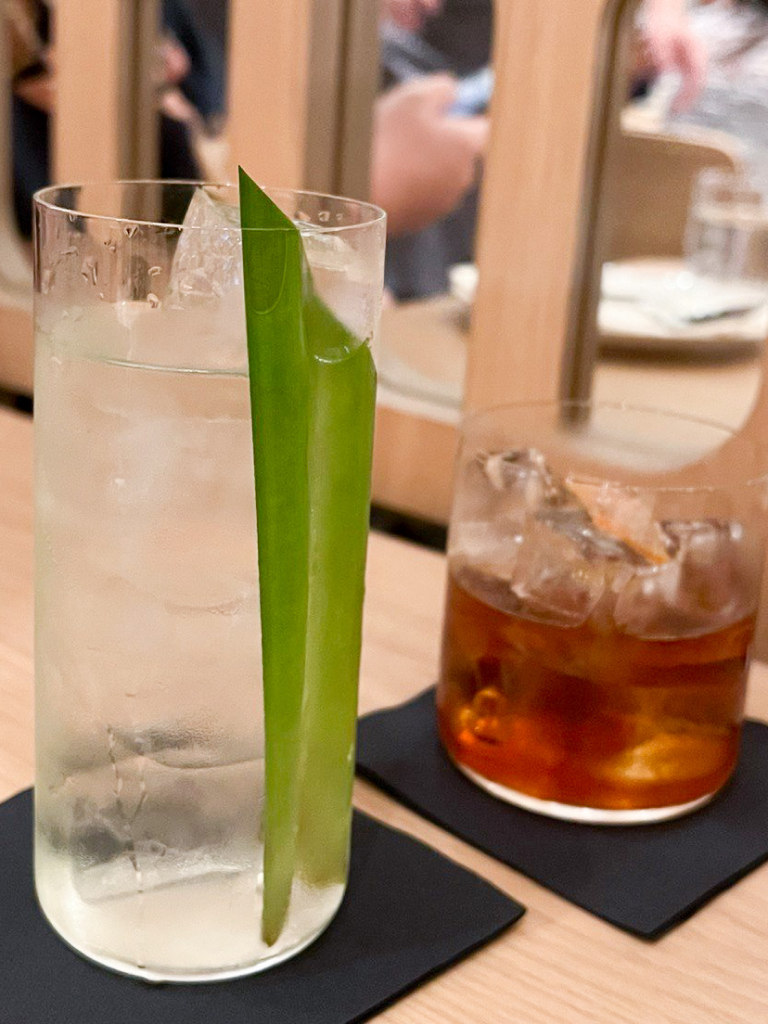
The Malinamnam (meaning “umami”, S$22) was subtly sweet, with coconut-heavy notes — ideal for those who want an easy tipple to accompany their meal for the evening. While the lightness was appreciated, it failed to leave a lasting impression.
Or perhaps I’m a little more nitpicky when it comes to cocktails.
Conversely, the Pait (meaning “bitter”, S$22), a bourbon-based concoction, veered towards the other extreme. Despite the addition of gula melaka, its intense bitterness proved challenging throughout the meal.
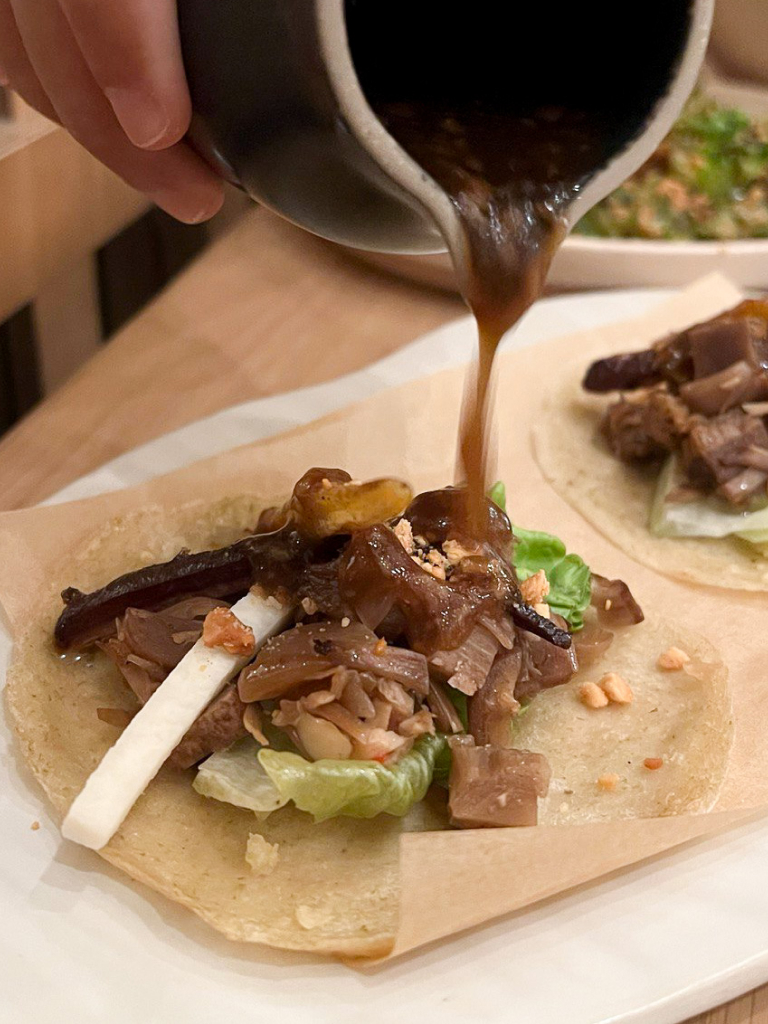
The lumpia, though delicious in its own right, struggled to stand out among the evening’s bolder, more powerful flavours. Filled with brown butter-roasted heirloom baby carrots, soy-braised young jackfruit, pickled jicama, minced garlic, and crushed peanuts, it’s a lighter option that might shine brighter in a different lineup.
I also noticed that leaving the lumpia sit for too long — unfortunately, the camera has first dibs — results in the mung bean crepe tragically falling apart.
Our quick takes
Is it conducive to conversation? Once peak dinner service begins, around 7pm, it can feel like a struggle to be heard across the table. If you’re looking to have intimate conversations, it would be best to dine here just as they open.
Is a reservation necessary? Yes. Even though it opened only a few weeks ago, the place buzzed with diners on a Wednesday evening.
How to get there? Hayop is a three-minute walk from Telok Ayer MRT Station Exit A.
HungryGoWhere paid for its meal at this restaurant for this review.
Looking for more food options in Telok Ayer? Shinrai, a newly-opened izakaya, offers wallet-friendly lunch options. If you’re in the area for a quick coffee run, we also recommend Snap Cafe’s Korean-inspired pastries and crunchy sourdough toasties.
Do explore the GrabFood Dine Out service for awesome deals.
You can also book a ride to Hayop at Amoy Street.
Hayop
104 Amoy Street
Nearest MRT: Telok Ayer
Open: Tuesday to Saturday (5pm to 10pm)
104 Amoy Street
Nearest MRT: Telok Ayer
Open: Tuesday to Saturday (5pm to 10pm)
